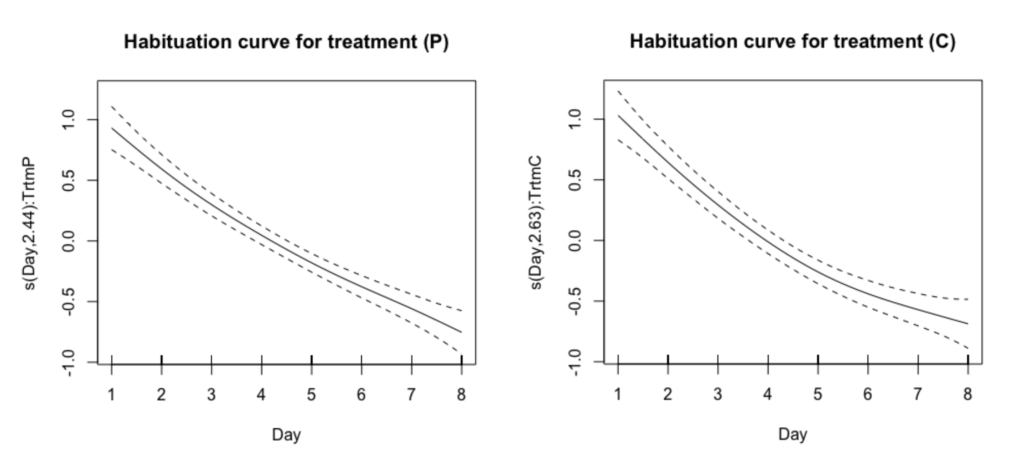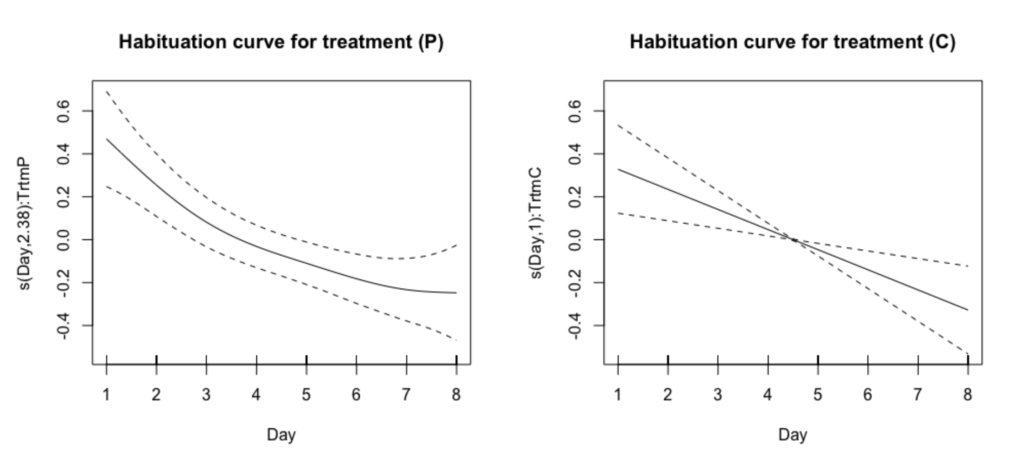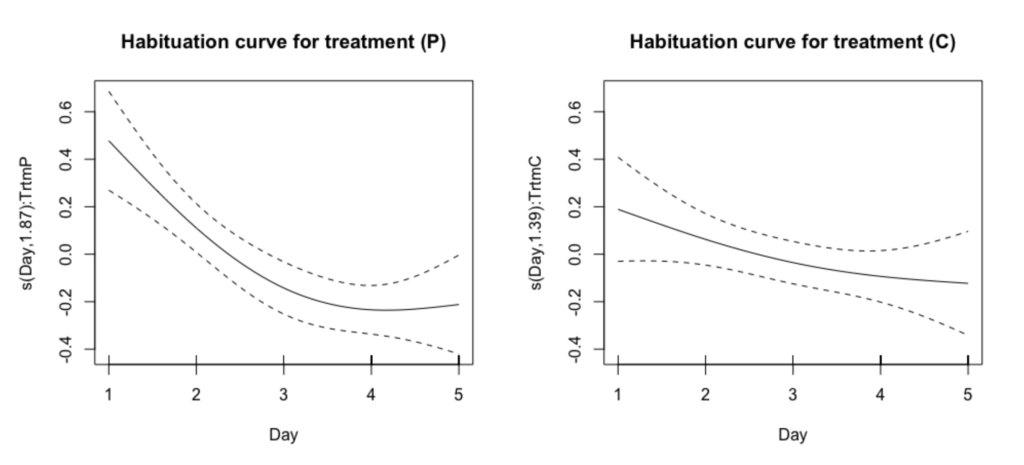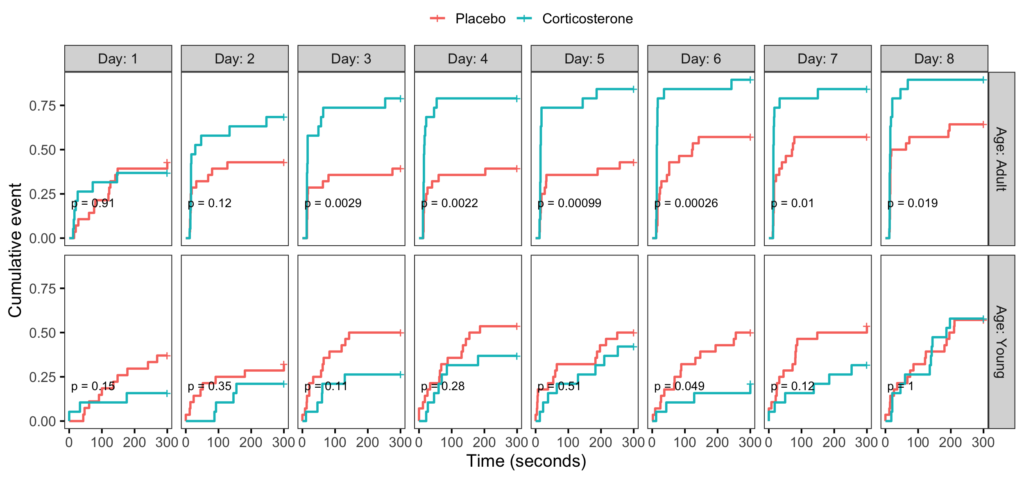Open Field Test
For the open field test, we examined two parameters: total distance travelled (cm) and total time spent at the outer edge of the arena (sec). Unfortunately, the treatment had no significant affect on either of these parameters.
The results from the Generalised additive models revealed different patterns for the habituation process between the treatment groups. For the total distance travelled, there is a slight difference between the patterns for the two treatment groups (figure below).

P stands for the placebo treatment group. C stands for CORT treatment group.
The curve patterns for the total time spent at the outer edge in the arena, one could see bigger differences between the two treatment groups (figure below).

P stands for the placebo treatment group. C stands for CORT treatment group.
For the CORT treatment group, one can see that the curve hits a plateau around days four and five of testing. Therefore, another graph was illustrated that only looked at the first five days of testing (figure below).

P stands for the placebo treatment group. C stands for CORT treatment group.
Emergence Test
For the emergence test, a correlation was found between body and head emergence; therefore, we decided to only look at head emergence. After sexual maturity, (from the third day of testing) the treatment had a significant affect on the latency to head-emerge (figure below).

The results from the emergence test suggest that the CORT-offspring habituated faster to the test as the trial days progressed and were less anxious than the Placebo-offspring.
Lastly, Discussion!